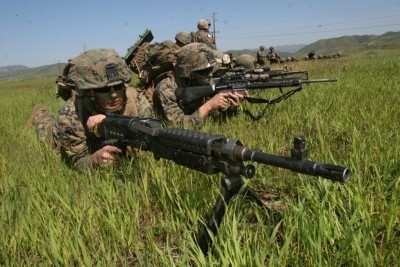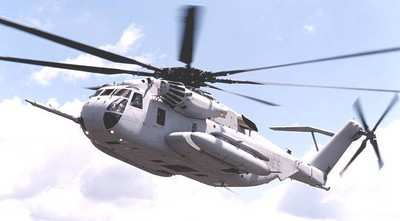Tactical Recovery Of Aircraft And Personnel Team's Job Is To
Bring Them Home
A Marine lies under the shade of an oak tree, immobilized by
injuries caused when his aircraft crashed.

He waits for a CH-53E “Super Stallion” after giving
the Marines coordinates and information necessary for his escape.
Moments later, pilots land the Super Stallion and a team of Marines
rush to his aid.
Had this been a real scenario, the Marines of Marine Medium
Helicopter Squadron 165 (Reinforced) and 1st Battalion, 4th Marine
Regiment, from the 15th Marine Expeditionary Unit (Special
Operations Capable), I Marine Expeditionary Force, could execute a
tactical recovery of aircraft and personnel (TRAP), during their
upcoming deployment aboard ship.
A TRAP is a mission performed by an assigned briefed air crew
for the specific purpose of the recovering personnel, equipment or
aircraft when the tactical situation prevents search and rescue
personnel from responding, and when survivors and their locations
are confirmed. When an aircraft crashes, Marine pilots fly to the
site to retrieve the downed personnel. The training they conducted
will prepare them for these situations.
“Today was all about repetitiveness in training,”
said Capt. Charles D. Werner, a pilot with the squadron. “We
had been working with these Marines for a while. It definitely
helped us further reinforce the fundamentals with this platoon.
Maintaining proficiency with the training will make conducting a
TRAP all that much more fluid when we deploy.”

CH-53E File Photo
Marines from 1/4, 88-mm mortar platoon, trained for the past few
months to operate as a TRAP platoon on the deployment. A TRAP
platoon’s mission is to travel with the aircraft, conduct the
recovery, provide security, and retrieve the downed air crew and
aircraft components. “It’s been an interesting process
because it’s something that Marines don’t typically do
every day,” said 1st Lt. Rodney Adams, the platoon commander.
“But it’s definitely been a steep learning curve that
the Marines have excelled at. It’s been an excellent training
evolution and the support has been great, and we’ve got
everything we’ve wanted as far as the TRAP objectives
go.”
The Marines performed 360 and 180-degree perimeter security, and
as the morning passed, they threw smoke grenades to signal the
Super Stallion for pick up. With each landing and drop off, the
Marines practiced boarding and exiting the helicopter in a fast and
efficient way. “It’s a bittersweet mission,” said
Adams. “It motivates the Marines and its something for us to
do outside the box of our [military occupational specialty], but we
hope it never has to get done in real life.”
The crew chiefs aboard the helicopter ensured the Marines
boarded and exited safely while monitoring the aircraft’s
status. “It was a good flight, no problems at all, and I
learned a lot from the training,” said Cpl. James R. Gast, a
crew chief with the squadron. “I would say external lifts are
the hardest mission we do, but TRAP blows it out of the water
because there’s so much going on at the same time with all
the coordinating with pilots, the grunts and the guys on the
ground.”

The day’s training culminated in a TRAP scenario with a
Marine acting as a downed AV-8B “Harrier II” pilot.
“In a real scenario, a pilot would give the air crew
coordinates and keep in contact with the TRAP team,” said
Lance Cpl. Joseph Bayless, a mortarman with the platoon.
“I’m the simulated crash victim that the Marines will
have to identify and recover.”
After carefully loading Bayless onto a stretcher, the Marines
finish their training for the day, one step closer to finishing
their pre-deployment training.
While a pilot’s downed aircraft will not bring them to
safety, these Marines can bring them home whenever they call for
help.
ANN Salutes Cpl. Christopher O'Quin , Marine Corps Air Station
Miramar
 Airbus Racer Helicopter Demonstrator First Flight Part of Clean Sky 2 Initiative
Airbus Racer Helicopter Demonstrator First Flight Part of Clean Sky 2 Initiative Diamond's Electric DA40 Finds Fans at Dübendorf
Diamond's Electric DA40 Finds Fans at Dübendorf ANN's Daily Aero-Term (04.23.24): Line Up And Wait (LUAW)
ANN's Daily Aero-Term (04.23.24): Line Up And Wait (LUAW) NTSB Final Report: Extra Flugzeugbau GMBH EA300/L
NTSB Final Report: Extra Flugzeugbau GMBH EA300/L Classic Aero-TV: 'Never Give Up' - Advice From Two of FedEx's Female Captains
Classic Aero-TV: 'Never Give Up' - Advice From Two of FedEx's Female Captains





